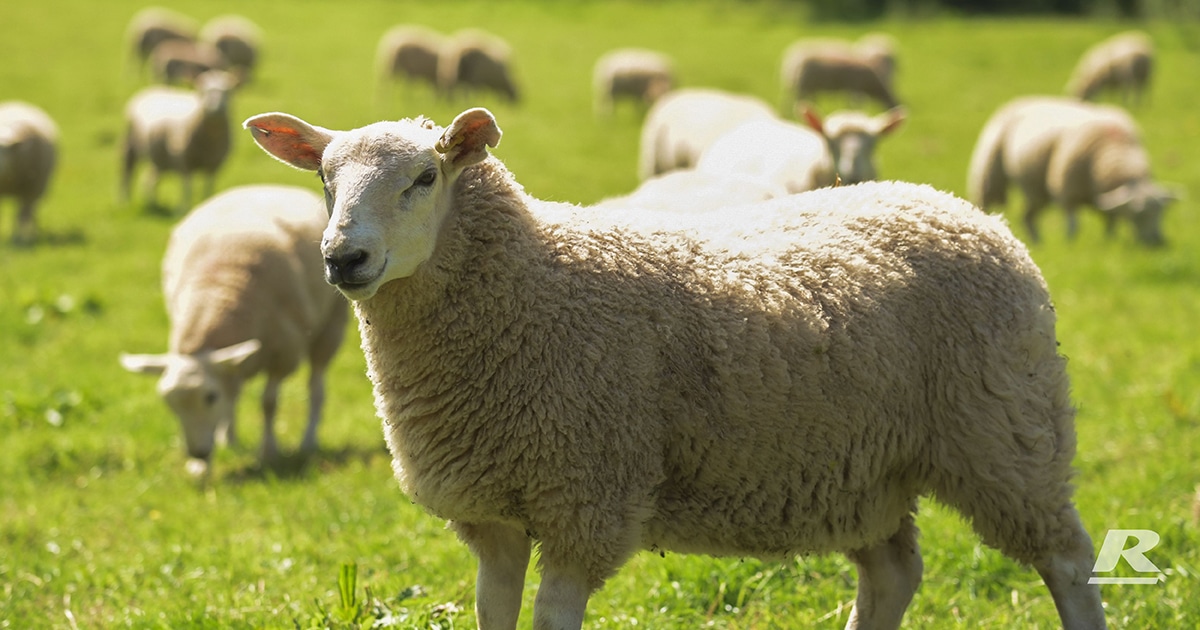The Why & When of Feeding Sheep
As farmers, knowing when and why to supplement your sheep’s diet with grain or pellets can help boost productivity and profitability. Whether it’s to manage seasonal feed shortages or to take advantage of economic opportunities, supplemental feeding can ensure your sheep get the energy and nutrients they need to thrive.
Why supplementary feed?
Supplementary feeding is typically done for these reasons:
Seasonal shortages: In dry conditions or during winter, pasture may be in short supply. When feed becomes limited, supplementing with grain or pellets can help fill the nutritional gap for your livestock.
Economic opportunities: In some cases, the cost of grain is low, and livestock prices are high. Supplementing feed during these times can increase liveweight gain, allowing farmers to turn a higher profit.
Planning your feeding strategy
Having a clear feed and farm budget is essential. This allows you to assess what your farm can achieve and determine when it makes sense to introduce supplementary feeding. Planning ahead can lead to better overall farm performance and a more profitable year.
Grain and pellets are excellent sources of energy and protein, especially for young sheep, pregnant ewes, or animals being prepared for market. These feeds can:
- Improve the efficiency of your homegrown feed.
- Increase dry matter intake (DMI) in newly lambed ewes.
- Boost conception rates, body condition score (BCS), and overall health.
Managing Rumen Health
A healthy rumen is crucial for livestock production. When transitioning sheep onto grain, it’s important to do so gradually to allow the rumen bacteria to adapt. Introducing too much grain too quickly can cause acidosis, a condition where lactic acid builds up in the rumen, potentially leading to illness or death. However, with proper feed management, this can be easily avoided.
Pasture management
Maximising homegrown feed is key to minimising costs. Tools like pasture management systems can help you assess what you’re growing and utilising. Knowing how much dry matter (DM) your paddocks produce helps inform your decision on when to supplement.
You can extend feed availability by using summer crops, high-quality hay, and grain/pellet mixes. This ensures your sheep have enough feed year-round, allowing you to finish lambs even after the traditional spring flush.
Feeding lambs for growth
The early nutrition of lambs plays a significant role in their growth potential. Early life is when feed conversion efficiency is at its highest, making it a prime time to introduce high-energy feeds like Lamb Grower Pellets or Lamb Finisher Mash. These feeds provide the energy lambs need to continue growing when pasture alone may not be enough.
Imprint feeding—introducing lambs to grain or pellets while they’re still with their mothers—can help lambs adapt to supplemental feeding. This reduces the period of adjustment after weaning and ensures lambs recognise and consume the feed more quickly, improving growth rates and overall health.
Lot feeding and managing weaners
Lot feeding can be implemented at any time of the year, allowing farmers to control the feed and growth rate of their sheep for market.
Weaners, which are often replacement stock, benefit from a rising plane of nutrition. Proper feeding ensures these young animals reach their genetic potential in terms of weight, wool production, and future reproductive capacity. For example, to maintain weaners at a minimum condition score of 2 (target of 3), they should weigh at least 27kg before summer.
Pre-Lambing ewes and dry stock
Before lambing, it’s helpful to scan ewes and group them by their nutritional needs—singles, twins, and empty ewes—so you can feed them accordingly. Nutritional needs vary greatly, and proper feed management ensures ewes have enough energy to produce healthy lambs while maintaining their own condition.
Post-lambing, ewes that have lost their lambs or failed to lamb should be removed from the group to save pasture for lactating ewes. Dry ewes can be fed a maintenance ration, allowed to gain weight, or sold.
Reducing Stress and Optimising Feed
Reducing stress in your flock improves DMI, feed efficiency, and overall health. Stressed sheep use more energy and lose weight faster, so managing their environment is critical.
Knowing your sheep’s feed requirements, transitioning to new feeds gradually, and monitoring feed utilisation are all essential to a successful supplementary feeding strategy.
Product options for feeding your sheep
At Reid Stockfeeds, we offer a range of feed products to support your sheep through various stages of production:
Lamb Grower Pellets and Lamb Finisher Mash: Ideal for finishing lambs and maximising early life feed efficiency.
Ewe and Lamb (Mash or Pellets): Supports ewes and lambs, particularly after lambing, to ensure optimal growth and milk production.
Maintainer rations and custom mixes: These can be tailored to your flock’s needs, whether for maintenance or weight gain.
Stud Ram & Sheep Mix: Designed to meet the nutritional requirements of rams and sheep for breeding or showing.
For more information read our induction checklists or speak to our experts on 1300 REID FEED or enquire here >
Author
Christopher Moutray
Sales and Nutrition Account Manager
